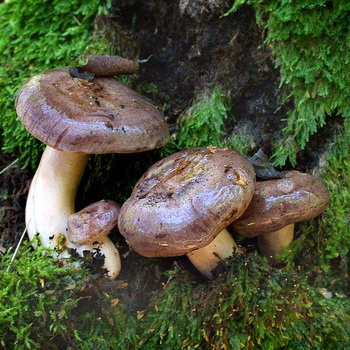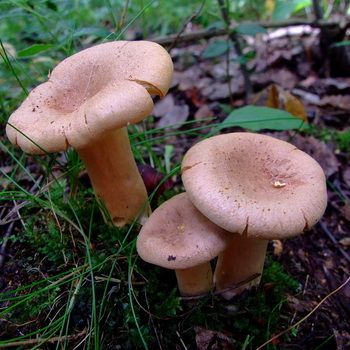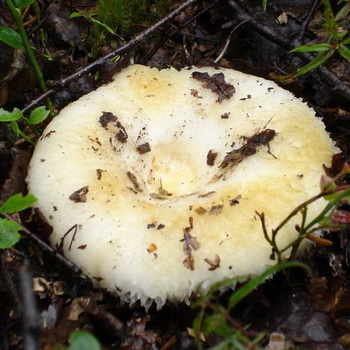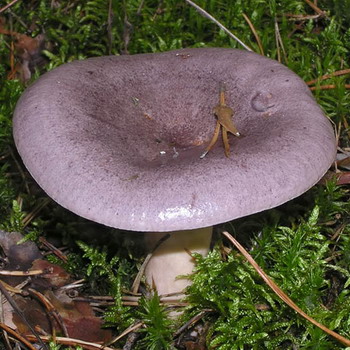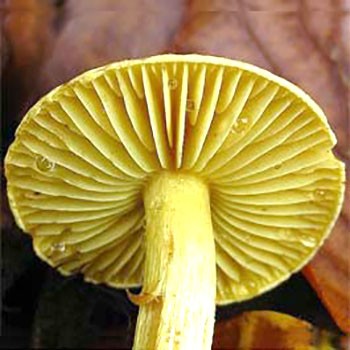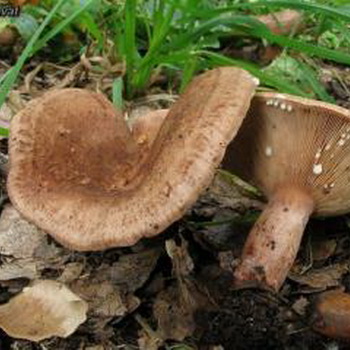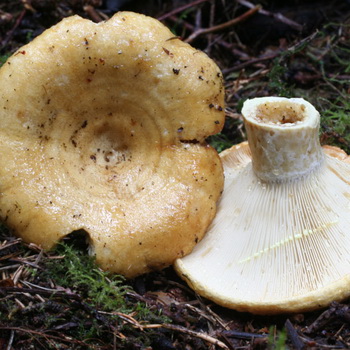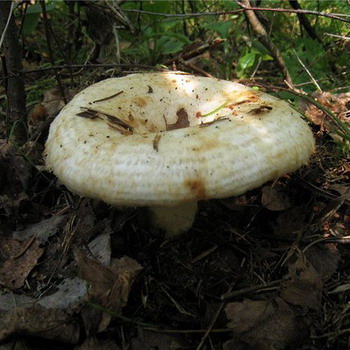Lactation (lactarius) inedible
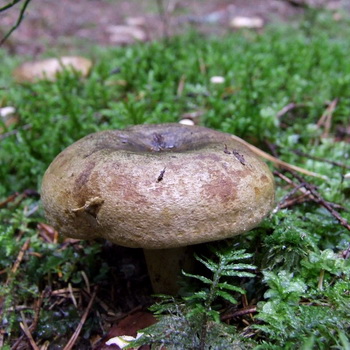
Below you can find a description and photos of inedible breasts of several types: resinous black, golden yellow and gray-pink lactarius. We also bring to your attention information about the halo of their distribution and the counterparts of these mushrooms.
Content
Inedible mushroom bust golden yellow
Category: inedible.
Other names: the lactarius is golden; the breast is golden-milky.
The flesh of Lactarius chrysorrheus is brittle, white in color, turns yellow when cut and when exposed to air. Milky juice is also white, but quickly changes color to yellow or golden.
The golden yellow breast has no pronounced smell; the flesh tastes unpleasant, bitter or peppery.
Hat (diameter 3-7 cm): opaque opaque, light beige or red, with spots and concentric stripes. Smooth to the touch.
The young mushroom is slightly convex, but eventually becomes open and concave.
Leg (height 3-9 cm): white, cylindrical in shape with a significant thickening at the base. Over time, changes from solid to hollow.
Records: thick and not wide, often with a characteristic bifurcation at the edges.
Doubles: lump of oak (Lactarius quietus). The main difference is that its milky juice does not change color. From the camelina real (Lactarius deliciosus) can also be distinguished by milky juice, or rather, by its color: in a real camelina, it is rich orange and changes to greenish.
When growing: from late June to mid-October in temperate countries of the Eurasian continent.
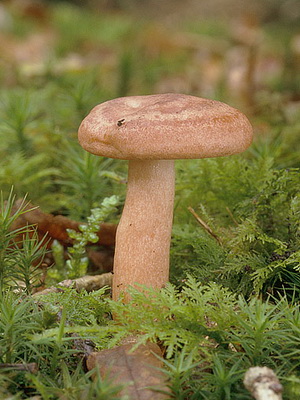
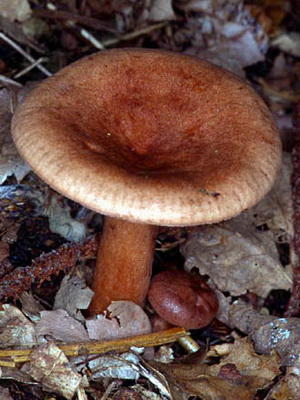
Where can I find: in deciduous forests near oaks or chestnuts.
Eating: due to unpleasant taste, it refers to inedible mushrooms.
Application in traditional medicine (data not confirmed and not passed clinical trials!): in the form of a decoction as a remedy for severe headaches.
Breast (lactarius) gray-pink (amber) and his photo
Category: inedible.
Other names: the lactarius is gray-pink, the inedible lump, the amber lactarius, and the rosary lactarius.
Hat of a gray-pink lump (Lactarius helvus) (diameter 5-14 cm): shiny, usually pinkish or brownish brown.
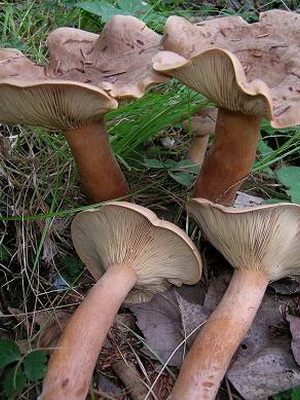
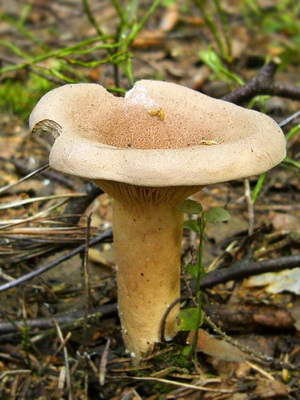
As you can see in the photo of the amber milkman, the cap of the young mushroom is usually flat. Over time, the edges rise significantly, and the hat takes the form of a funnel.
Leg of an amber milkman (height 3-12 cm): loose, cylindrical, in old mushrooms it becomes hollow. Usually the same color as the hat.
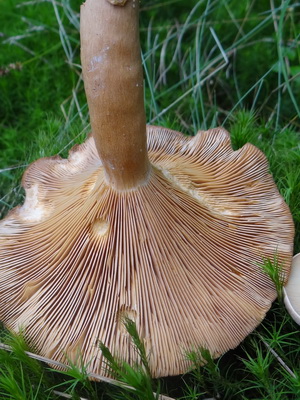
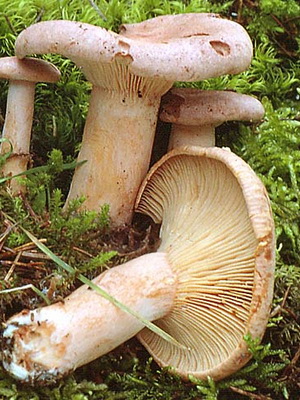
Pay attention to the photo of the gray-pink lactarius: the mushroom plates are whitish or slightly pinkish, firmly attached to the mushroom leg.
Pulp: light yellow with a very strong odor. The smell of gray-pink breast is tart and unpleasant, similar to a peculiar aroma of chicory or medicinal lovage.
Doubles: absent (due to the peculiar aroma).
When growing: from mid-July to the end of September in northern countries with a temperate climate.
Where can I find: on acidic soils of coniferous forests, especially under spruce. Less often under birch trees or in blueberry bushes.Often found in wetlands.
Eating: due to unpleasant odor and poor taste in food is unsuitable.
Application in traditional medicine: not applicable.
Inedible bum tar black
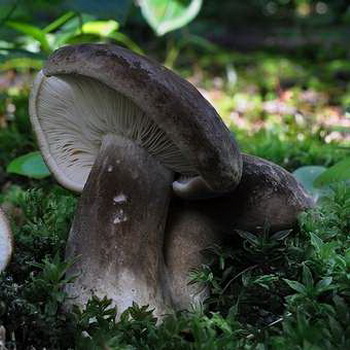 Category: inedible.
Category: inedible.
Other names: the lactic is resinous black; the lactic is resinous.
Hat of resinous black lump (Lactarius picinus) (diameter 3-11 cm):dark brown or chocolate, velvety, usually flat or slightly depressed.
Leg (height 2-7 cm): strong, cylindrical, with a slight pubescence. Expands from bottom to top.
Records: not wide and frequent.
Pulp: dense and white, on cut and when interacting with air it turns slightly pink, and not the pulp itself turns pink and red, but milky juice. When cracked or cut, it gives off a distinctive fruit aroma.
Doubles: brown lactarius (Lactarius lignyotus). The only difference is that his hat is even darker.
The resinous-black lump grows from the beginning of August to the end of September in temperate countries of the Eurasian continent.
Where can I find: usually under pines and firs.
Eating: not edible due to taste.
Application in traditional medicine: not applicable.
